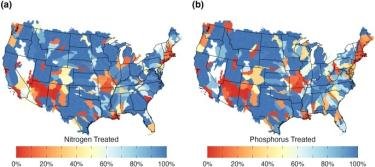Overview of Senate Bill SB24-037
Colorado Senate Bill SB24-037, “Study Green Infrastructure for Water Quality Management,” was signed into law by Governor Polis in May 2024. Recognizing the significance of this initiative, Governor Polis said upon signing the bill, “I’m so excited by the opportunity to reduce costs, benefit our climate, and protect our water. Traditional gray infrastructure removes pollutants from water before getting released back into circulation but it’s very costly and energy-intensive. We know green infrastructure can do it more efficiently and in better ways.”
This law directs the University of Colorado’s Mortenson Center in Global Engineering & Resilience (CU Boulder) and Colorado State University (CSU), to work in partnership with the Colorado Department of Public Health and Environment (CDPHE), to explore the feasibility of green infrastructure to address water quality concerns in Colorado’s rivers and reservoirs.
- Green infrastructure refers to interconnected networks of green spaces offering water quality management solutions as alternatives to traditional centralized water and wastewater treatment facilities, also known as gray infrastructure. These watershed-scale solutions assist municipalities and other water providers in pursuing pre-permit compliance with state and federal water quality standards, thereby improving water quality while meeting regulatory requirements.
- These types of water quality management approaches, known as Water Quality Trading, have been long supported by the US EPA under the Clean Water Act, and in Colorado through the Pollutant Trading Policy.
- This study will also examine innovative project funding mechanisms, including federal grants and private sector-supported carbon credits.
What to Expect from our Feasibility Study
 CDPHE, CU, and CSU are collaborating to develop pathways to support voluntary, public, and private sector pre-permit watershed actions that could, if successful, be credited within a CDPHE Clean Water Act discharge permit.
CDPHE, CU, and CSU are collaborating to develop pathways to support voluntary, public, and private sector pre-permit watershed actions that could, if successful, be credited within a CDPHE Clean Water Act discharge permit.
Further, under the supervision and direction of CDPHE, CU Boulder and CSU are directed to identify up to three pilot projects with utility and municipal partners across Colorado. These projects will showcase the implementation and financing of green infrastructure as an alternative compliance program. Each project can operate for up to five years, with technical assistance provided by the universities. The resulting comprehensive report will include legislative and administrative recommendations to advance green infrastructure and financing mechanisms for water quality management in these projects and across Colorado.
Engage with Us
We invite municipalities, utilities, non-profits, and other watershed stakeholders to explore this innovative approach with CDPHE, University of Colorado, and Colorado State University. Our goal is to create a more attractive and scalable framework for improving water quality with green infrastructure across Colorado. By working together, we can uphold high benchmarks for non-point source nutrient removal, achieve substantial environmental benefits, and provide economic savings for regional utility ratepayers, while addressing instream water quality issues.
Contact us to learn more about how your local treatment facility may be a fit for this initiative.


